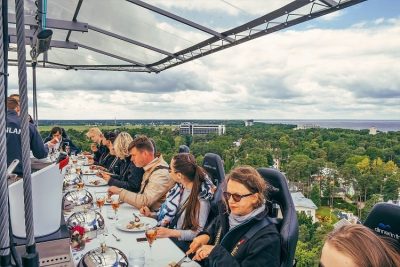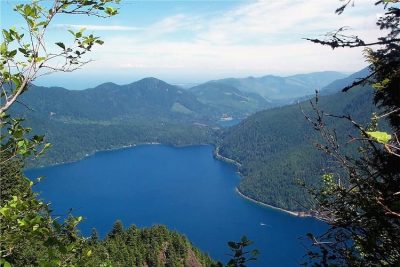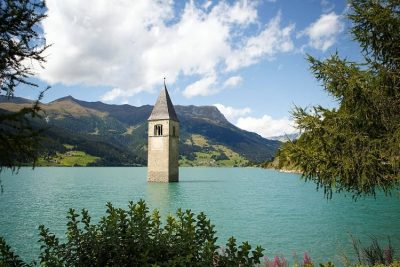Dark Sky Reserve: A Protected Area Free From Artificial Light
Share

The Paranal Observatory in Chile is protected with the dark-sky preserve status. (European Southern Observatory / Flickr)
An unconventional natural resource that we never considered preserving has been on the radar of a few organizations for some time. While we were busy protecting the land, air and water we started to lose focus on the sky. Luckily, someone recognized the need to preserve our night sky from light pollution, the International Dark-Sky Association (IDA).
The IDA is a not-for-profit organization started in the year 1988 with the express mission to protect and preserve areas of nocturnal skies to allow for uninterrupted astronomical observations. At least 700 sq. km. of land, called Dark-Sky Reserves, surrounding scientific observatories are preserved for this purpose.
Reserves are generally formed through long-term planning and a mutual agreement between landowners who understand the purpose of dark sky preservation. The purposes of the IDA are to reduce light pollution, encourage astro-tourism, and make a comfortable environment for nocturnal plants and animals.
What causes light pollution?
Light pollution usually occurs in metro cities because of the notion that brightly lit areas may have significantly lesser crime rates than dark areas. The Guardian reports that there is no such correlation between the two. There are different types of crimes, certain violent acts occur during dark hours whereas thefts and property acts also occur during the day. In fact, even the opposite might be true where studies have concluded that brighter areas are more prone to acts of vandalism and graffiti.
Another reason for light pollution is the fact that humans, as a species, are diurnal animals. Our visibility at night is significantly less than during the day, even though our ancestors lived their lives just fine with the available starlight. We use artificial light to help us drive cars, ride bicycles and carry on other nightly activities. To enable us to see better, we created brighter lights.
How does light pollution harm us?
It is true that the pollution caused by the misuse of artificial light can be reversed, however, its effects are not so. Light pollution causes an irrevocable damage to the ecosystem. It affects the circadian rhythm in humans, which is the biological clock that tells us when to sleep, when to wake up, and controls our mood and physical strength. Our body produces melatonin when we are asleep at night, and this hormone helps improve our immunity system. With a weaker immune system, we are more susceptible to diseases.
Humans responding to the circadian rhythm are called photobiology because we respond to light (and the lack of it). There are some plants that respond similarly to darkness (and the lack of it) and this response is called scotobiology. Since plants are affected by the colour and the duration of lighting, it affects their natural growth and just like humans, become more susceptible to diseases and infestations.
It becomes a bit more dangerous when light pollution also affects wildlife behaviour. Nocturnal animals usually use moonlight as a source of light while foraging for food, but now they are getting used to artificial light that is almost as bright as daylight. Their behaviours such as hunting prey, finding shadows to hide from predators, and carrying food back to their shelter instead of eating it in fields are affected by it. Neither finding a lot of prey than usual nor escaping from predators a lot more than usual is going to help the circle of life.
Other living things like insects are also affected by changing light patterns. There are certain insects that are attracted to light and the increased sources of artificial light distract them, thus affecting their mating and hunting activities.
Notable Dark-Sky Reserves
Stargazing in a city flashing with bright lights is next to impossible. Light pollution has limited the number of stars we can see with our naked eye to about a few hundred. Compare this to the many thousands that our ancestors used to look at to create astrological charts. But now, thanks to the efforts taken by the IDA and landowners, we now have 12 dark sky reserves worldwide where we can go to stargaze in a clear sky.
Covering an impressive area of 1300 sq. km., the Westhavelland reserve in Germany is one of the most notable ones. It’s big enough to be a tiny populated city. It’s fascinating because not only can you stargaze here, but you can also view other astronomical events like Aurora Borealis, zodiacal light – which is sunlight scattered by dust in space, and gegenschein – which is a zodiacal light seen at midnight.
Another reserve to note is the Kerry Dark Sky Reserve in Ireland. One of the most interesting features of this reserve is that it’s by the sea; you can listen to the sound of waves while you’re stargazing. Kerry reserve is also the first to be recognized under IDA’s Gold Tier status, which is a status reserved only for the darkest of skies.
Pic du Midi in France situated at a majestic 2877 meters above ground is a mountain in the French Pyrenees Range. The air up here is at its purest, and stars look so much closer than from the ground.
While light pollution may have degraded the sky quality in metro cities, it has helped us realize the value of the nocturnal sky, its components and the flora and fauna that survive due to it. Now when we stargaze, we’ll do it with an added realization that there are people who’ve never even seen the Milky Way.
Enjoyed this article? Also, check out “Ultima Thule: A Snowman-Shaped Celestial Body That is the Farthest Object a Space Probe Has Ever Captured“.
Recommended Visit:
Paranal Observatory | Chile
Fact Analysis:
STSTW Media strives to deliver accurate information through careful research. However, things can go wrong. If you find the above article inaccurate or biased, please let us know at [email protected]













